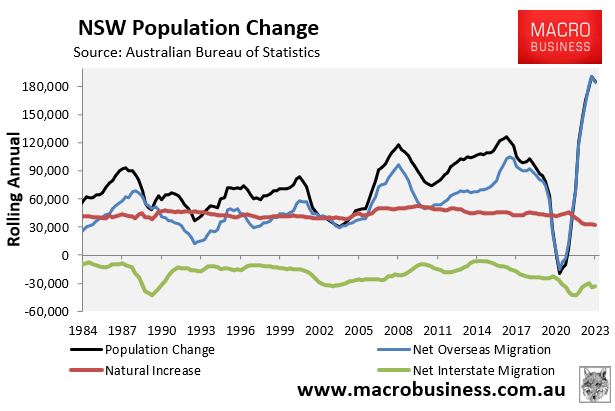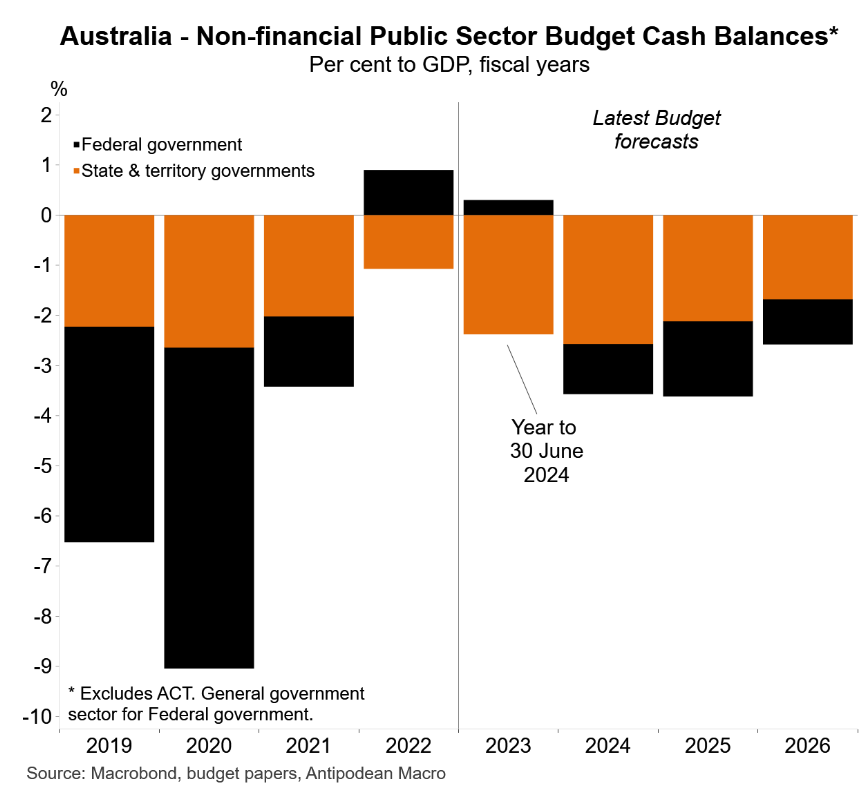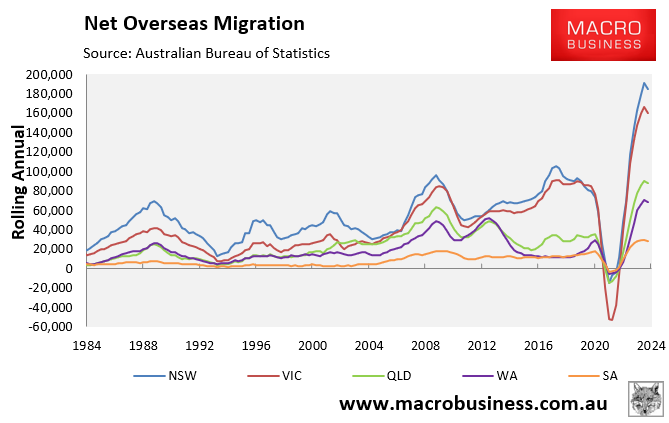In this week’s Treasury of Common Sense on Radio 2GB, I discussed the NSW State Budget and explained how the federal government’s mass immigration policy is burying the states in debt.
Edited Transcript:
The New South Wales budget slipped from an expected $2 billion surplus over the next 3 years to an $8.5 billion dollar deficit.

A lot of that was obviously attributable to lower GST revenue but there also has been a lot of extra expenditure.
There is about $5 billion for 8400 new social homes. There is about $9 billion for schools. A billion dollars to tackle school maintenance. A couple of billion dollars for the Paramount Light Rail. And about a billion dollars for new roads.
I’d argue that this expenditure is required because New South Wales received a record of 185,000 net overseas migrants in 2023, and that was actually 100% of New South Wales’s population growth.

The latest federal budget that was released in May forecasts that New South Wales’s population is going to grow by just under 500,000 people in the four years to 2027.

Source: 2024 Federal Budget
Obviously, if you’re going to bring in all these people, you’ve got to provide infrastructure, services, houses, and all those things for them.
And this is the age-old problem. The federal government is running a massive migration program and they’re collecting the benefits of big migration through increased personal and company taxes.
But the cost of that big migration is falling on the state governments and also us residents. Cash-strapped state governments are drowning in debt and have been forced to sell everything off. They have built toll roads and other infrastructure with private companies, which has pushed up our costs as well.

States like New South Wales are growing very rapidly via migration, and they have to provide services, housing, infrastructure, and all those things for those extra people.
They don’t collect the tax benefit from that migration. Therefore, it has plunged the state governments into deficits.
New South Wales should really team up with Victoria, since they are the two biggest states that are receiving the overwhelming majority of international migrants. They are also the two states that are stuck in the biggest deficits. It is no coincidence.

The reality of the situation is that both those two states are receiving massive amounts of migrants. New South Wales received 185,000 in 2023, whereas Victoria received around 160,000.
Those two states are suffering the burden from this Big Australia immigration. They are both the states that are forecast to experience the biggest population increase.
They need more revenue in order to pay for infrastructure, public housing, social housing, government services, and all those sorts of things.
The states should push back and demand $50,000 in funding for every new resident that settles in their states.
Because the reality of the situation is that the federal government collects 82% of the nation’s tax revenue.
It gets all the benefits of immigration from higher income taxes and higher company taxes, which is why the Australian Treasury always pushes for more migration.
But the cost are then deferred onto other parties, including the states.
So, I think a fairer distribution of revenue is in order here so that New South Wales, Victoria, and all the other states can provide adequate public housing, infrastructure, and services for the new people that are arriving.

